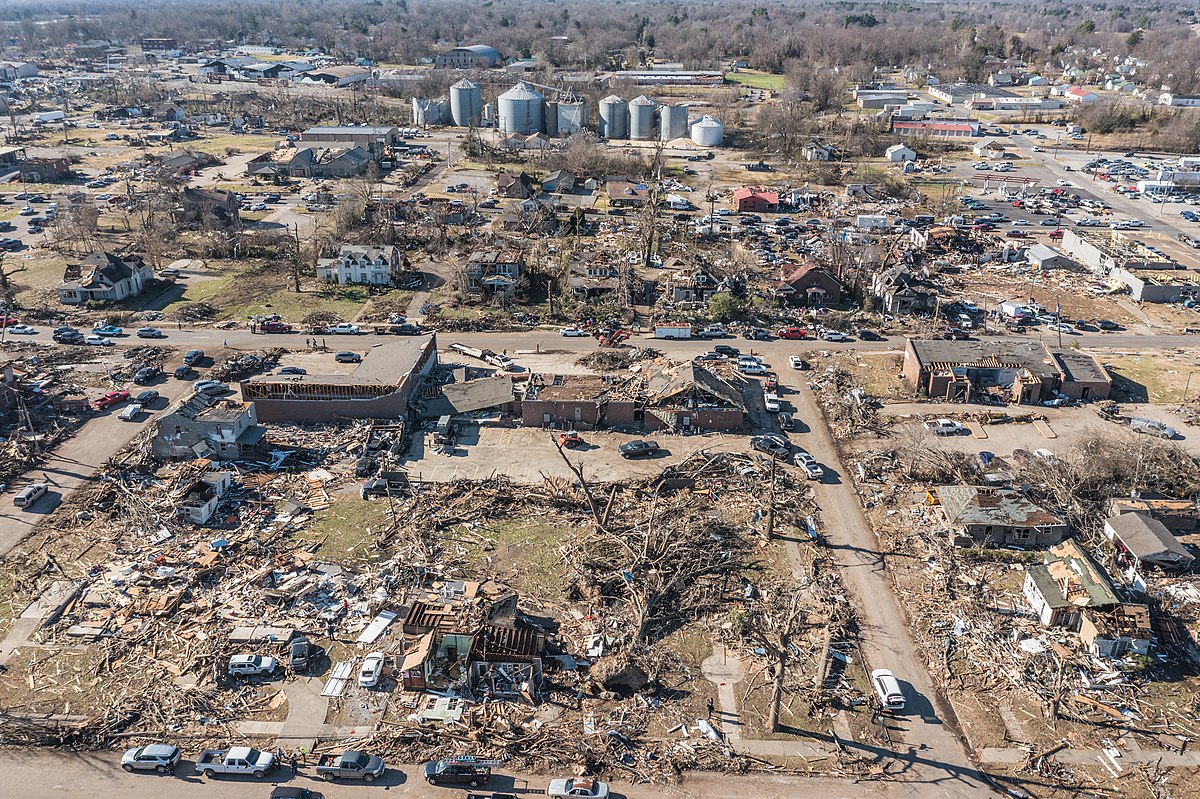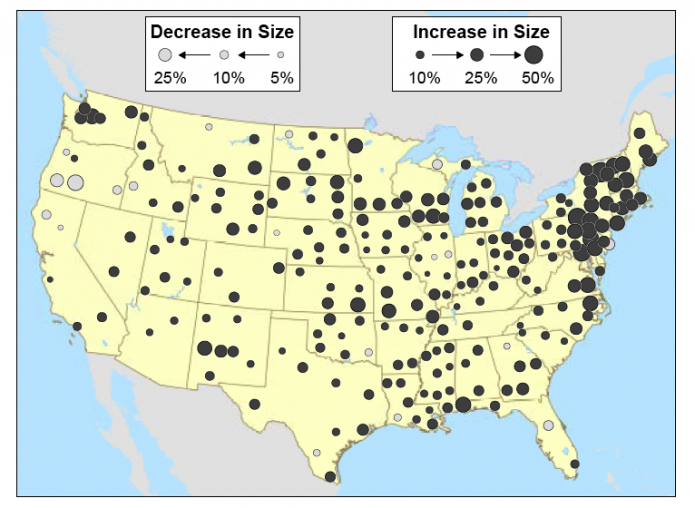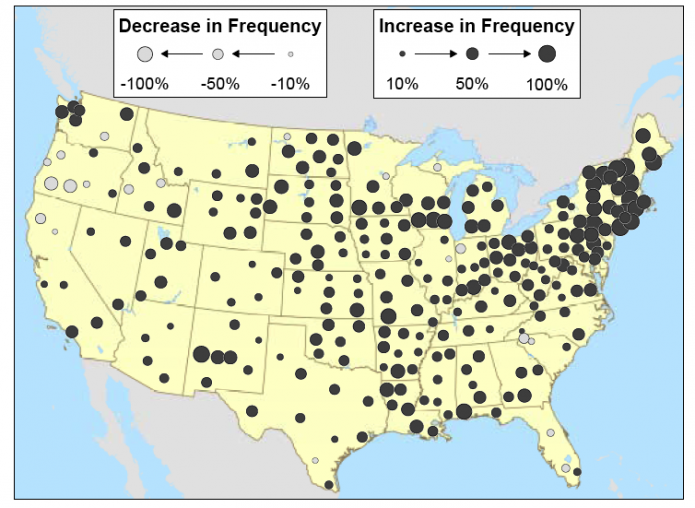Severe Storms (not including Hurricanes)
The night of December 10 and early morning of December 11, 2021 saw devastating tornadoes tear across the central US from Arkansas to Kentucky. Up to 71 different tornadoes have been confirmed rated up to EF-4 with wind speeds up to 190 miles per hour. The tornadoes caused massive damage totaling $3.9 billion, destroying whole communities, causing 88 fatalities and over 600 injured. 71 tornadoes have been confirmed. The worst damage was in the town of Mayfield, Kentucky, which was leveled by a strong EF-4 tornado. Much of the center of the town was irreparably damaged with houses and stores receiving devastating damage, 22 people died in that town alone. The tornado forecasts were generally highly accurate that night, but sadly, warnings weren’t always acted upon. What was particularly significant about the outbreak is how late in the season they occurred. Tornadoes in the central US are frequent in spring, when warm and cold air-masses collide over the region. It is very unusual for these strong storms to occur in the winter.

By studying the network of weather stations across the US, researchers have found a couple of interesting results — the biggest storms recorded in a given year not including tornadoes are increasing in strength, and the frequency of extreme storms is also increasing. In addition the area known as "tornado alley" where touch-downs are common is shifting eastward from Texas, Oklahoma and Kansas to Arkansas, Louisiana, Mississippi, Alabama and Tennessee.

In addition, the frequency of extreme storms is also increasing. An extreme storm is one where the rate of precipitation exceeds by a certain amount the long-term mean rate of precipitation for a given site (so an extreme storm in a wet region like the northeast US has a much higher precipitation rate than an extreme storm for a drier region). So, you might be asking yourselves whether these results translate into more frequent, massive tornadoes. This is a somewhat controversial topic. The consensus answer is that with a warmer atmosphere, tornadoes will definitely become more powerful (just like hurricanes), but the word is still out whether they will become more frequent. What is obvious from the December 2021 tornadoes is that these powerful weather systems will occur throughout the year in the future.

